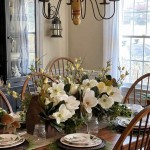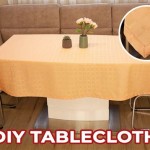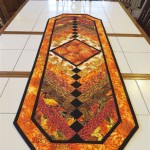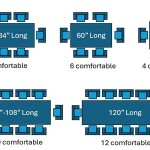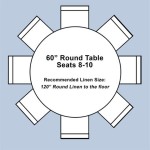A Guide To Amish Round Dining Tables And Chairs
Amish round dining tables and chairs represent a significant segment of the furniture market, valued for their durability, handcrafted quality, and timeless aesthetic. This article provides a comprehensive guide to understanding the nuances of Amish round dining table and chair sets, covering styles, materials, construction techniques, and factors influencing purchasing decisions.
Understanding the Appeal of Amish Furniture
The enduring popularity of Amish furniture stems from several key factors. Foremost is the commitment to traditional woodworking techniques passed down through generations. Amish artisans prioritize quality craftsmanship, employing time-tested methods that ensure the structural integrity and longevity of each piece. This often involves mortise-and-tenon joinery, dovetailing, and hand-sanding, resulting in furniture that is significantly more robust than mass-produced alternatives. Furthermore, the use of solid hardwoods, sourced locally and sustainably, contributes to the inherent value and environmental responsibility associated with Amish furniture. The absence of mass production also allows for a degree of customization unavailable in commercially produced furniture, catering to individual preferences in size, style, and finish.
Beyond the quality of construction, Amish furniture is imbued with a sense of heritage and tradition. The simple, unadorned designs reflect the values of the Amish community, emphasizing functionality and practicality over ostentation. This aesthetic appeals to those seeking furniture that is both beautiful and enduring, conveying a sense of warmth and authenticity to the home.
The durability of Amish furniture is a major selling point. Built to withstand daily use for generations, these pieces become family heirlooms, passed down through families. This longevity makes them a worthwhile investment, particularly compared to less durable, commercially manufactured furniture that may require frequent replacement.
Materials Used in Amish Round Dining Tables and Chairs
The selection of materials is paramount in the creation of Amish round dining tables and chairs. Solid hardwoods are the primary choice, known for their strength, beauty, and ability to accept stains and finishes. The most common wood species include:
Oak: Renowned for its strength and distinctive grain pattern, oak is a versatile choice for both traditional and contemporary designs. Red oak and white oak are the two main varieties, each offering slightly different characteristics in terms of color and durability.
Cherry: Prized for its rich, reddish-brown hue and smooth grain, cherry wood develops a lustrous patina over time, enhancing its visual appeal. It is a popular choice for formal dining rooms and adds a touch of elegance to any space.
Maple: A light-colored hardwood with a tight grain, maple is known for its durability and resistance to scratches and dents. It is a versatile option that can be stained to match a variety of décor styles. Hard maple, also known as sugar maple, is the preferred variety due to its superior density.
Walnut: A dark, chocolate-brown hardwood with a beautiful grain pattern, walnut is a luxurious choice for dining tables and chairs. Its rich color and natural beauty make it a statement piece in any dining room.
Hickory: One of the hardest and most durable domestic hardwoods, hickory is an excellent choice for furniture that will see heavy use. Its distinctive grain pattern and color variations add character to the design.
The choice of wood species significantly impacts the overall aesthetic and durability of the dining table and chairs. Factors such as grain pattern, color, hardness, and resistance to wear and tear should be considered when selecting the appropriate wood for a particular application.
In addition to solid hardwoods, some Amish furniture may incorporate other materials, such as metal accents or upholstered seats. However, the core structure of the table and chairs is typically constructed from solid wood to ensure long-lasting durability.
Styles and Designs of Amish Round Dining Tables and Chairs
Amish round dining tables and chairs are available in a wide range of styles to suit various tastes and preferences. While often associated with traditional designs, Amish artisans also create furniture in contemporary and transitional styles. Understanding the different styles can help in selecting a set that complements the existing décor.
Traditional: Traditional Amish furniture often features ornate details, such as turned legs, carved accents, and intricate moldings. These designs are reminiscent of classic furniture styles and evoke a sense of timeless elegance. Woods like cherry and walnut are frequently used in traditional designs.
Mission: Characterized by clean lines, simple geometric shapes, and a focus on functionality, Mission-style furniture is a popular choice for those seeking a timeless and understated aesthetic. Oak is a common wood choice for Mission furniture, often finished with a dark stain to highlight the grain pattern.
Shaker: Shaker furniture is known for its simplicity, functionality, and lack of ornamentation. Clean lines, tapered legs, and a focus on utility define the Shaker style. Maple and other light-colored hardwoods are often used in Shaker furniture. Shaker tables are often designed to be lightweight and easy to move.
Contemporary: Contemporary Amish furniture incorporates modern design elements, such as sleek lines, minimalist silhouettes, and the use of mixed materials. These designs often feature lighter wood finishes and may incorporate metal or glass accents.
Transitional: Transitional style bridges the gap between traditional and contemporary, combining elements of both to create a versatile and adaptable aesthetic. This style often features clean lines and simple forms, but with subtle details that add visual interest.
Beyond the overall style, there are variations in design details, such as the shape of the table legs, the style of the chair backs, and the type of finish used. These details contribute to the unique character of each piece of furniture.
Round dining tables themselves come in several variations. Some feature a pedestal base, offering ample legroom and a clean, uncluttered look. Others have four legs arranged around the perimeter of the table. Some are also available with leaves that extend the table's size, making it suitable for larger gatherings.
Factors to Consider When Purchasing Amish Round Dining Tables and Chairs
Purchasing an Amish round dining table and chair set is a significant investment. Several factors should be considered to ensure that the chosen set meets individual needs and preferences.
Size: The size of the dining table should be appropriate for the size of the dining room and the number of people who will typically be seated at the table. A round table is an excellent choice for smaller spaces as it maximizes seating capacity and allows for easy conversation. Consider the diameter of the table and the number of chairs that can comfortably fit around it.
Style: The style of the dining table and chairs should complement the existing décor of the dining room. Consider the overall aesthetic of the space and choose a set that blends seamlessly with the surrounding furniture and accessories.
Wood Species: The choice of wood species affects the appearance, durability, and price of the dining table and chairs. Consider the desired color, grain pattern, and hardness of the wood when making a selection. Also consider the maintenance requirements of different wood species.
Finish: The finish protects the wood from damage and enhances its natural beauty. Amish furniture is typically finished with a durable, hand-rubbed varnish or lacquer that resists scratches, stains, and moisture. Consider the desired sheen level (e.g., matte, satin, gloss) and the color of the finish.
Construction Quality: Inspect the furniture carefully to ensure that it is well-constructed and durable. Look for solid wood construction, tight joints, and a smooth, even finish. Pay attention to the details, such as the quality of the hardware and the craftsmanship of the joinery.
Comfort: The chairs should be comfortable to sit in for extended periods. Consider the height of the seat, the shape of the back, and the presence of any upholstery or cushioning. Test the chairs to ensure that they provide adequate support and comfort.
Customization Options: Many Amish furniture makers offer customization options, allowing customers to specify the size, style, wood species, finish, and other details of their dining table and chair set. This can be a valuable option for those seeking a truly unique and personalized piece of furniture.
Budget: Amish furniture is typically more expensive than mass-produced furniture due to its higher quality construction and materials. Establish a budget before beginning the shopping process and focus on finding a set that offers the best value for the money.
By carefully considering these factors, it is possible to select an Amish round dining table and chair set that will provide years of enjoyment and become a cherished heirloom for generations to come.

Amish Made Hudson Round Expandable Solid Wood Pedestal Table

Benelux Round Pedestal Dining Table Countryside Amish Furniture

Round Kingstown Single Pedestal Dining Table From Dutchcrafters Amish

Corleone Modern Round Pedestal Table Countryside Amish Furniture

Amish Made Alana Single Pedestal Dining Table Lancaster County Pa Self Storing Or Extension Style

Hardwick Round Dining Table Chair Package From Curiosity Interiors

Knox County Round Dining Table Countryside Amish Furniture

Lexington Single Pedestal Table Amish Direct Furniture

Alstead 48 Round Dining Table Quick Ship From Dutchcrafters Amish

Hardwick Round Dining Table Chair Package From Curiosity Interiors
Related Posts

